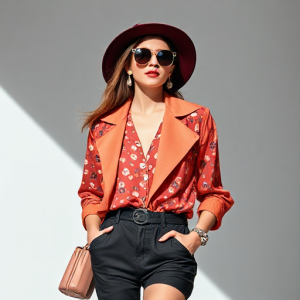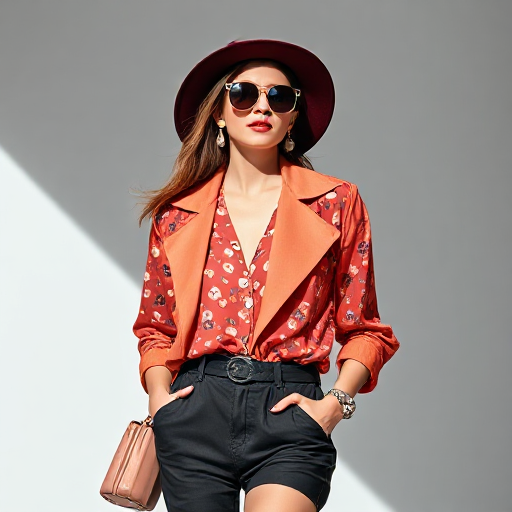
Affiliate marketing has revolutionized the way fashion brands and influencers generate revenue online. It has become an essential part of digital marketing strategies, enabling brands to leverage the reach and influence of content creators, bloggers, and social media influencers. This guide explores the fundamentals of affiliate marketing in fashion, its benefits, strategies for success, and the challenges involved.
What is Affiliate Marketing?
Affiliate marketing is a performance-based marketing strategy where individuals (affiliates) promote products or services for a brand (merchant) and earn a commission for each sale, click, or lead generated through their unique referral links. The process typically involves three key players:
- Merchants – Fashion brands or retailers that sell products.
- Affiliates – Bloggers, influencers, or publishers who promote the brand’s products.
- Consumers – End-users who purchase through affiliate links.
How Affiliate Marketing Works in the Fashion Industry
Fashion brands partner with affiliates who have an engaged audience in the industry. Affiliates promote clothing, accessories, footwear, or beauty products through various channels, such as:
- Blogs and fashion websites
- Social media platforms (Instagram, TikTok, Pinterest, YouTube)
- Email marketing
- Review and comparison sites
Affiliates are provided with a unique tracking link that allows brands to monitor conversions and determine commissions based on a predefined agreement.
Benefits of Affiliate Marketing in Fashion
- Cost-Effective Marketing – Brands only pay for actual sales or leads, reducing upfront marketing costs.
- Increased Reach and Exposure – Affiliates help brands reach a wider audience, increasing brand visibility.
- Trust and Credibility – Influencers and fashion bloggers have loyal followers who trust their recommendations, leading to higher conversion rates.
- Passive Income for Affiliates – Content creators can earn commissions continuously from past promotions.
- Diverse Revenue Streams – Fashion brands can work with multiple affiliates, maximizing their reach across different audience segments.
Strategies for Successful Affiliate Marketing in Fashion
1. Choosing the Right Affiliates
Brands should collaborate with affiliates who align with their brand image and target audience. Micro-influencers with niche followers often generate better engagement than celebrities with a broader but less engaged audience.
2. Leveraging Social Media and Content Marketing
Fashion is a visual industry, making platforms like Instagram, TikTok, and Pinterest ideal for showcasing products. Affiliates should create high-quality content such as:
- Outfit inspiration posts
- Try-on hauls
- Fashion tips and styling guides
- Unboxing and review videos
3. Using Affiliate Networks and Programs
Fashion brands can set up their affiliate programs or join established networks like:
- Amazon Associates – Suitable for general fashion products.
- Rakuten Marketing – Offers a variety of fashion brand partnerships.
- ShareASale – Popular among independent fashion retailers.
- LTK (LIKEtoKNOW.it) – Ideal for influencers with strong Instagram and Pinterest followings.
4. Providing Competitive Commission Rates
Attractive commission structures encourage affiliates to put in more effort. Fashion brands typically offer:
- 5%-20% per sale (varies by brand and product type)
- Flat-rate commissions for high-ticket items
- Bonuses for top-performing affiliates
5. Offering Exclusive Discounts and Promo Codes
Brands can provide affiliates with unique discount codes that encourage their audience to make purchases while tracking conversions effectively.
6. Monitoring and Optimizing Performance
Tracking affiliate performance is essential to identify high-performing affiliates and optimize campaigns. Brands should use tools like:
- Google Analytics
- UTM tracking
- Affiliate network dashboards
Challenges in Fashion Affiliate Marketing
1. Market Saturation
The fashion industry is highly competitive, making it difficult for new affiliates to stand out.
2. Low Commission Margins
Some fast-fashion brands offer lower commission rates, making it less lucrative for affiliates.
3. Changing Consumer Behavior
Trends in fashion evolve quickly, requiring affiliates to continuously update their content.
4. Tracking Issues
Some consumers clear cookies or use ad blockers, potentially affecting affiliate tracking and commissions.
Future Trends in Fashion Affiliate Marketing
- AI and Personalization – Advanced AI tools help affiliates recommend products tailored to their audience’s preferences.
- Live Shopping and Influencer Collaborations – Platforms like Instagram Live and TikTok Shop are revolutionizing real-time product promotions.
- Sustainable and Ethical Fashion – Affiliates promoting eco-friendly brands are gaining traction as consumers become more conscious of sustainability.
- Integration of Augmented Reality (AR) – Virtual try-ons enhance user experience, increasing conversion rates.
Affiliate marketing in fashion is a powerful strategy for brands and content creators alike. By leveraging social media, engaging with the right audience, and using data-driven insights, both brands and affiliates can achieve long-term success. Whether you are a fashion entrepreneur looking to expand your reach or an influencer seeking new income streams, affiliate marketing offers limitless possibilities for growth in the ever-evolving fashion industry.
